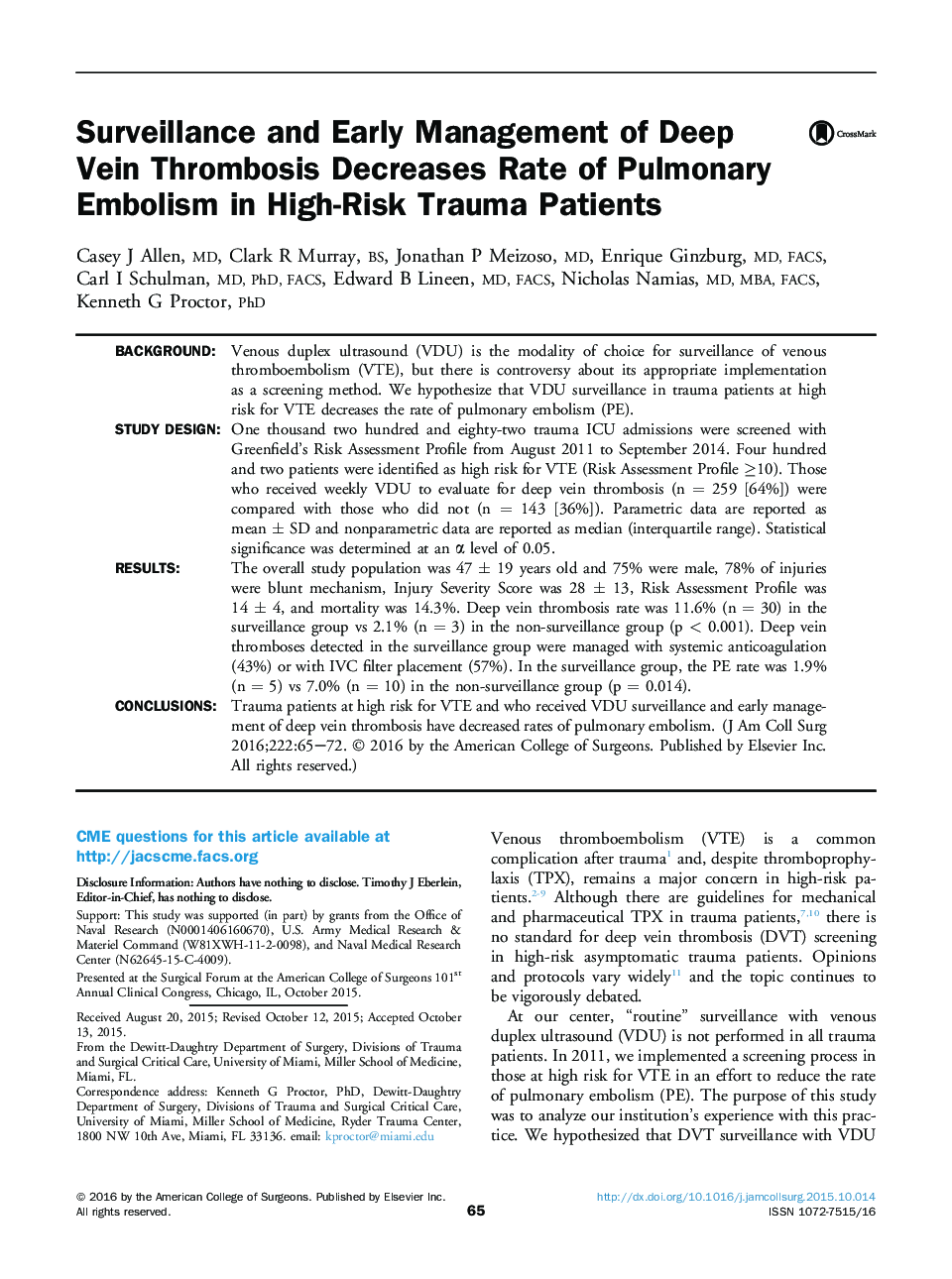| Article ID | Journal | Published Year | Pages | File Type |
|---|---|---|---|---|
| 4290949 | Journal of the American College of Surgeons | 2016 | 8 Pages |
BackgroundVenous duplex ultrasound (VDU) is the modality of choice for surveillance of venous thromboembolism (VTE), but there is controversy about its appropriate implementation as a screening method. We hypothesize that VDU surveillance in trauma patients at high risk for VTE decreases the rate of pulmonary embolism (PE).Study DesignOne thousand two hundred and eighty-two trauma ICU admissions were screened with Greenfield's Risk Assessment Profile from August 2011 to September 2014. Four hundred and two patients were identified as high risk for VTE (Risk Assessment Profile ≥10). Those who received weekly VDU to evaluate for deep vein thrombosis (n = 259 [64%]) were compared with those who did not (n = 143 [36%]). Parametric data are reported as mean ± SD and nonparametric data are reported as median (interquartile range). Statistical significance was determined at an α level of 0.05.ResultsThe overall study population was 47 ± 19 years old and 75% were male, 78% of injuries were blunt mechanism, Injury Severity Score was 28 ± 13, Risk Assessment Profile was 14 ± 4, and mortality was 14.3%. Deep vein thrombosis rate was 11.6% (n = 30) in the surveillance group vs 2.1% (n = 3) in the non-surveillance group (p < 0.001). Deep vein thromboses detected in the surveillance group were managed with systemic anticoagulation (43%) or with IVC filter placement (57%). In the surveillance group, the PE rate was 1.9% (n = 5) vs 7.0% (n = 10) in the non-surveillance group (p = 0.014).ConclusionsTrauma patients at high risk for VTE and who received VDU surveillance and early management of deep vein thrombosis have decreased rates of pulmonary embolism.
